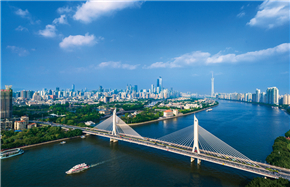Facial recognition installed at Chinese crossroads to tackle jaywalking
JINAN - Jaywalkers in China risk be identified by facial recognition technology and having their photo and personal information exposed to public to shame them for breaking the law.
Traffic management authorities in several Chinese cities have installed facial recognition equipment and screens at major intersections to tackle the ongoing problem of jaywalking and encourage road safety.
Since the equipment was installed in Jinan, capital of east China's Shandong Province, in early May, it has captured photographic proof of more than 6,000 cases involving pedestrians and non-motorized vehicles crossing roads during red lights.
The facial recognition equipment takes several snapshots and a 15-second video when it detects pedestrians crossing the intersection on a red light. The photographs appear on the screen immediately so the offender can see they have been caught.
The photographs are then compared with the images in the provincial police department database and matches are checked by a police officer to confirm accuracy. Within 20 minutes, the offender's photograph and personal information such as their ID number and home address are displayed on the screen at the crossroad.
Traffic police then contact the offenders and give them a choice of three forms of punishment: a fine of 20 yuan (around 3 U.S. dollars), a half-hour traffic rule course, or 20 minutes assisting police in controlling traffic.
Offenders' information may also be published on social media, for example on the Jinan Traffic Police Weibo microblogging account. In the future, police may also inform the offenders' employers or residential communities of the violation.
"Since the new technology has been adopted, the cases of jaywalking have been reduced from 200 to 20 each day at the major intersection of Jingshi and Shungeng roads. Fewer people are crossing roads during red lights," said Li Yong with Jinan Traffic Police.
The city will install facial recognition equipment at 50 major intersections by the end of June. Each piece of equipment costs around 100,000 yuan.
A number of Chinese cities in the provinces of Fujian, Jiangsu, Guangdong and Shandong have also started using the technology to catch jaywalkers.
Facial recognition is becoming increasingly common in China, where it has been installed in ATM machines, KFC restaurants, female university dormitories and even public toilets to save toilet paper.
However, the rapid and extensive application of the technology has also triggered public concerns about privacy.
The measures have experimental value as they help traffic police to deal with minor offenses that are to some extent rampant and hard to penalize, said Liu Guanghua, a law professor at Lanzhou University.
"However, law enforcement agencies should be careful to stay within the boundaries of law. The use of personal information should be strictly controlled," said Liu.
In response to public concern, Liu Xiaojing from Jinan Traffic Police, pointed out screens only show the images of adults and hide several numbers or characters on the offender's ID number and address.
Other critics claimed that facial recognition is not a silver bullet to tackle jaywalking, as people may cross roads illegally because they have limited right of way in a country which had 300 million motor vehicles as of March.
"Traffic lights are designed to be more friendly to vehicles in China. I sometimes have to wait for at least three green lights before I can cross a road. It is the drivers who should be shamed on the screen," said a Weibo account under the name "A ZX".
Another Weibo account "Yaoyiyi" commented that many city roads are too wide and the green light changes too quickly.
"I am usually trapped in the middle of the road when the light suddenly turns red and have to run to the other side. It is good to be a runner!" "Yaoyiyi" said.














